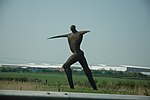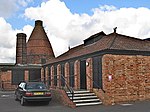British Cellophane
1935 establishments in EnglandBritish companies established in 1935Chemical companies of the United KingdomCompanies based in BridgwaterCompanies formerly listed on the London Stock Exchange ... and 3 more
EngvarB from June 2018Manufacturing companies established in 1935Manufacturing plants in England

British Cellophane Ltd (BCL) was a joint venture company formed in 1935 between La Cellophane SA and Courtaulds, when they began building a major factory for producing Cellophane in Bridgwater, Somerset, England.
Excerpt from the Wikipedia article British Cellophane (License: CC BY-SA 3.0, Authors, Images).British Cellophane
Westminster Way,
Geographical coordinates (GPS) Address Nearby Places Show on map
Geographical coordinates (GPS)
| Latitude | Longitude |
|---|---|
| N 51.1407 ° | E -2.9859 ° |
Address
Westminster Way
TA6 4DP
England, United Kingdom
Open on Google Maps








